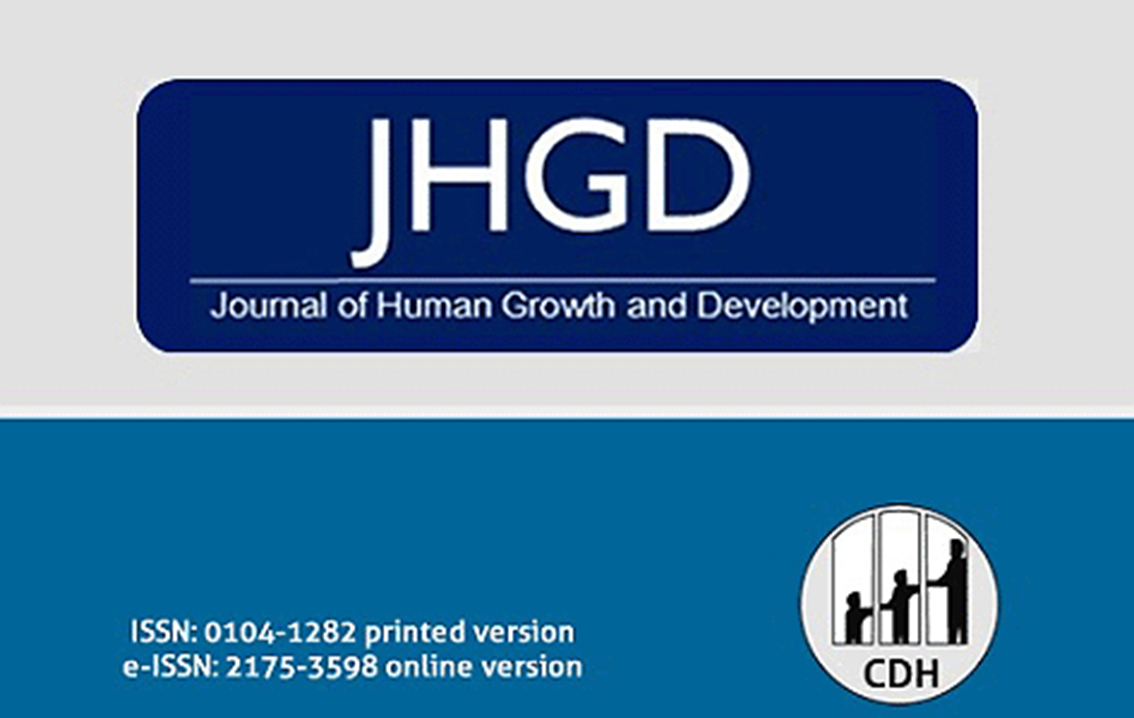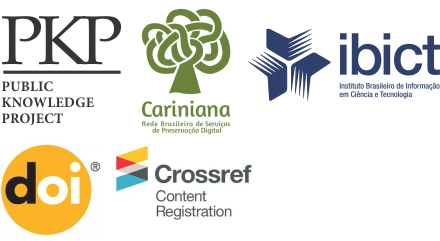Components of intersectoral partnerships and positive health outcomes in highly vulnerable areas in São Paulo/Brazil: a mixed methods study
DOI:
https://doi.org/10.36311/jhgd.v32.13777Keywords:
Intersectoral collaboration, primary health care, poverty, mixed methodAbstract
Introduction: Studying highly vulnerable areas is challenging, but it can support intersectoral actions to tackle the social inequalities prevalent therein.
Objective: This research explores the relationship between the central constituents of intersectoral collaborations and the positive results of intersectoral actions in areas of high social vulnerability in São Paulo, Brazil. It also analyzes the perception of professionals in basic health units (BHU) regarding the results related to those actions.
Methods: This study employed methodological triangulation and the mixed method sequential explanatory strategy. First, we applied an online form validated by face and content for BHU managers. Then, we used the SPSS Statistics software to perform nonparametric tests. Statistical significance was set at p < 0.05, and 95% confidence intervals and phi coefficients were calculated. After identifying the units that carried out intersectoral actions with different partners, we conducted focus groups in four of them with 26 health professionals until saturation. Finally, we integrated quantitative and qualitative data.
Results: The bivariate analysis showed that the creation of healthy habits and environmental improvements were associated with the central components of intersectoral partnerships. The content analysis presented steps to elaborate the actions and arrive at the results from the central elements. Integration of the results explained how the results related to the actions were elaborated, considering the central elements of the collaborative processes.
Conclusions: Partners negotiate with patients or communities to adhere to the care provided through the collaborative process. However, they recognized that they needed to evaluate the proposed actions regularly.
Downloads
References
World Health Organization. The World Health Report 2008 — Primary Health Care (Now More Than Ever). World Health Organization. Geneva, Switzerland. 2008.
Gillies P. Effectiveness of alliances and partnerships for health promotion. Health Promot. Int. 1998; 13(2): 99-120.
Manandhar M, et al. Intersectoral debate on social research strengthens alliances, advocacy and action for maternal survival in Zambia. Health Promot. Int. 2009; 24(1): 58-67.
Zahner SJ. Local public health system partnerships. Public health reports (Washington, D.C.: 1974). 2005; 120(1): 76-83.
Unger A, Riley LW. Slum health: from understanding to action. PLoS Medicine. 2007; 4(10): 1561-1566. Available from: https://doi.org/10.1371/journal.pmed.0040295
Heidemann IT, Wosny AM, Boehs AE. Promoção da Saúde na Atenção Básica: estudo baseado no método de Paulo Freire. Cien Saude Colet. 2014; 19(8): 3553-59.
Becker D, Edmundo K, Nunes NR, Bonatto D, Souza RD. Empowerment e avaliação participativa em um programa de desenvolvimento local e promoção da saúde. Cien Saude Colet. 2004; 9(3): 655-67.
Carneiro AC, Souza VD, Godinho LK, Faria IC, Silva KL, Gazzinelli MF. Educação para a promoção da saúde no contexto da atenção primária. Rev Panam Salud Pública. 2012; 31(2): 115-20.
Sá LD, Gomes ALC, Nogueira JD, Villa TC, Souza KM, Palha PF. Intersetorialidade e vínculo no controle da tuberculose na Saúde da Família. Rev Enferm. 2011; 19(2):9.
Brasil.Portaria-no-2436-2017-Ministério-da-Saúde-Aprova-a-Política-Nacional-de-Atenção-Básica. 2017; 1-32.
Dubois A, St-Pierre L, Veras M. A scoping review of definitions and frameworks of intersectoral action. Cien Saude Colet. 2015; 20(10): 2933-2942.
Corbin JH, Mittelmark MB. Partnership lessons from the Global Programme for Health Promotion Effectiveness: a case study. Health Promot. Int. 2008; 23(4): 365-371.
Corbin JH, Jones J, Barry MM. What makes intersectoral partnerships for health promotion work? A review of the international literature. Health Promot. Int. 2018; 33(1): 4-26. https://doi.org/10.1093/heapro/daw06
City Mayors Statistics. Largest cities in the world. 2018. Available from: http://www.citymayors.com/statistics/largest-cities-population-125.html
Wijk LB, Mângia EF. Atenção psicossocial e o cuidado em saúde à população em situação de rua: uma revisão integrativa. Cien Saude Colet. 2019 Sep 9; 24(9): 3357-3368.
Reis AA, Malta DC, Furtado LA. Desafios para as políticas públicas voltadas à adolescência e juventude a partir da Pesquisa Nacional de Saúde do Escolar (PeNSE). Cien Saude Colet. 2018; 23(9):2879-2890.
Egry EY, Apostolico MR, Morais TC. Notificação da violência infantil, fluxos de atenção e processo de trabalho dos profissionais da Atenção Primária em Saúde. Cien Saude Colet. 2018; 23(1): 83-92.
Akerman M, Franco de Sá R, Moyses S, Rezende R, Rocha D. Intersetorialidade? IntersetorialidadeS! Cien Saude Colet. 2014; 19(11): 4291-4300.
Fiorati RC, Arcêncio RA, Segura del Pozo J, Ramasco-Gutiérrez M, Serrano-Gallardo P. Intersectorality and social participation as coping policies for health inequities-worldwide. Gaceta sanitaria. 2018; 32(3): 304-314.
Corbin JH, Mittelmark MB, Lie GT. Mapping synergy and antagony in North–South partnerships for health: a case study of the Tanzanian women’s NGO KIWAKKUKI. Health Promot. Int. 2013; 28(1): 51-60. Available at: https://doi.org/10.1093/heapro/dar092.
Butterfoss FD, Francisco VT. Evaluating community partnerships and coalitions with practitioners in mind. Health Promot. Pract. 2004; 5(2):108-114. Available at: https://doi.org/10.1177/1524839903260844.
Creswell JW. Research Design: Qualitative, Quantitative, and Mixed Methods Approaches. 4th ed. London: Sage; 2014.
São Paulo. Secretaria Municipal de Saúde. Coordenação de Epidemiologia e Informação (CEInfo). Agrupamentos Socioambientais dos Territórios da Saúde no Município de São Paulo. Boletim CEInfo, Análise IX Ano, n 10, São Paulo: Secretaria Municipal da Saúde. 2014.
Franco CM, Santos AS, Salgado MF. Manual do Gerente: desafios da média gerência na saúde. Escola Nacional de Saúde Pública Sergio Arouca. 2011.
Van den Hoonaard WC. Qualitative research in action: a Canadian primer. 3rd ed. Ontario: Oxford University Press Canada; 2018.
Vieira S. Medidas de confiabilidade. In: Como elaborar questionários. São Paulo: Atlas; 2009:153-5.
Sijtsma K. On the Use, the Misuse, and the Very Limited Usefulness of Cronbach’s Alpha. Psychometrika. 2009; 74(1): 107-120.
Osinski IC, Bruno AS. Categorías de respuesta en escalas tipo likert. Psicothema. 1998; 10(3): 623-3
Chan YH. Biostatistics 203 – Survival analysis. Singapore Med J. 2004; 45: 249-256.
Virgolino A, Heitor MJ, Carreiras J, Lopes E, Øverland S, Torp S, Guðmundsdóttir D, Miguel JP, Fátima Reis M, Santos O. Facing unemployment: study protocol for the implementation and evaluation of a community-based intervention for psychological well-being promotion. BMC psychiatry. 2017; 17(1): 261.
Brasil, Ministério da Saúde/DATASUS/Sistema de Informação Hospitalar – SIH. Internações Hospitalares do SUS no município de São Paulo a partir de 2008. Available at: http://tabnet.saude.prefeitura.sp.gov.br/cgi/tabcgi.exe?secretarias/saude/TABNET/AIHRD08/AIHRDNET08.def (2019)
Martin-Misener R, Valaitis R, Wong ST, MacDonald M, Meagher-Stewart D, Kaczorowski J, Linda O, Savage R, Austin P. Strengthening Primary Health Care through Public Health and Primary Care Collaborations Team. A scoping literature review of collaboration between primary care and public health. Prim. health care res. & dev. 2012; 13(4): 327-346.
Csete J. et al. Public health and international drug policy. Lancet (London, England). 2016; 387(10026), 1427-1480.
Trapé TL, Campos RO. The mental health care model in Brazil: analyses of the funding, governance processes, and mechanisms of assessment. Revista de saude publica. 2017; 51(0): 19.
Sacardo DP, Noronha GN, Neves HN, Alves YM. Promoção da saúde na metrópole com foco na intersetorialidade e sustentabilidade. Tempus Actas de Saúde Coletiva. 2016. Available at: http://www.tempusactas.unb.br/index.php/tempus/article/view/1568
Jones J, Barry MM. Exploring the relationship between synergy and partnership functioning factors in health promotion partnerships. Health Promot. Int. 2011; 26(4): 408-420.
Weiss ES, Anderson RM, Lasker RD. Making the most of collaboration: exploring the relationship between partnership synergy and partnership functioning. Health education and behavior: the official publication of the Society for Public Health Education. 2002; 29(6): 683-698.
Downloads
Published
Issue
Section
License
Copyright (c) 2022 Bezerra PM, Guerriero ICZ

This work is licensed under a Creative Commons Attribution 4.0 International License.







